Last Updated on February 12, 2024 by teamobn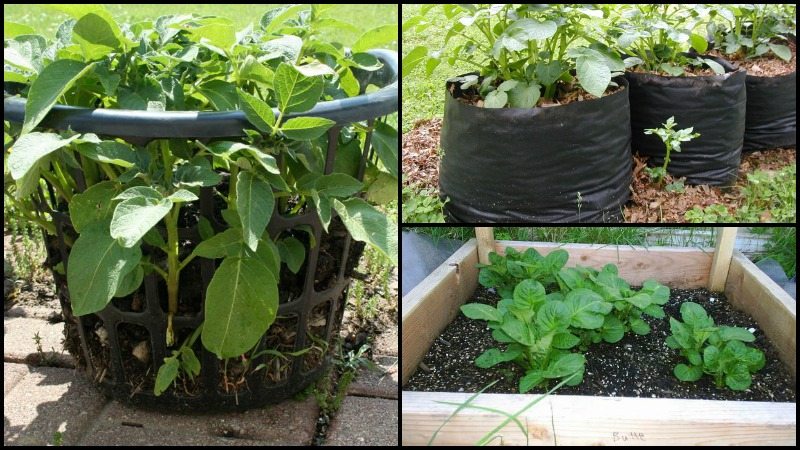
Fresh is best and that applies to the humble spud as much as any other food! But, is it genuinely worthwhile to cultivate potatoes in a dedicated planter when they are readily affordable in stores? Potatoes, recognized for their bountiful yields, demand only a modest section of your garden for cultivation. The core concept of the ‘no-dig’ approach hinges on the continuous addition of soil to the potato planter as the plants progress in their growth.
Potato planters are helpful since they consume less space, and you can make use of our garden for more planting structures. Potato planters are also ideal for people who want to have these at home and gardens are unavailable. You can decide the size range of your potato planter.
Each method has the potential to yield 100 kgs (220 lbs) or more potatoes per m2! Remember that your crop needs good rich soil with ample but not excessive watering.
Advantages of No Dig Potato Planters
Growing potatoes using a “no-dig” method offers several advantages:
1. Reduced Labor: No-dig methods eliminate the need for extensive manual labour associated with traditional potato cultivation, saving time and physical effort.
2. Preserved Soil Structure: By avoiding soil disturbance, the natural structure of the soil is preserved, promoting better soil aeration, drainage, and overall soil health.
3. Improved Soil Fertility: Layering organic matter on top of the soil enriches it with nutrients as it decomposes, providing a nutrient-rich environment for healthy potato growth.
4. Weed Suppression: No-dig methods involve covering the soil surface with mulch or organic materials, which helps suppress weed growth by blocking sunlight and preventing weed seeds from germinating.
Incorporating weed suppression techniques like no-dig methods into your DIY potato planters not only simplifies maintenance but also promotes a healthier, more productive growing environment for your crops. With fewer weeds competing for resources, your potato plants can focus their energy on growth and development, ultimately leading to a more abundant harvest of delicious homegrown potatoes.
5. Conserved Moisture: The mulch layer helps retain soil moisture by reducing evaporation, ensuring consistent moisture levels for optimal potato growth and reducing the need for frequent watering.
6. Enhanced Root Development: Potatoes grown in a no-dig system tend to develop stronger and more extensive root systems, allowing them to access nutrients and water more efficiently.
7. Reduced Soil Erosion: By keeping the soil surface covered with mulch or organic materials, no-dig methods help prevent soil erosion caused by wind and water runoff, protecting the soil structure and fertility.
8. Environmental Sustainability: No-dig methods promote soil health and biodiversity, reduce soil disturbance, and minimize synthetic fertilizers and pesticide consumption, contributing to overall environmental sustainability in agriculture.
These advantages make no-dig potato cultivation an attractive option for home gardeners and farmers looking to grow healthy, productive potatoes while minimizing their environmental impact and workload.
There are several places you can grow your potatoes. Here are ten ways you can grow them in a ‘no dig’ vertical garden…
Click on any image to start the lightbox display. Use your Esc key to close the lightbox. You can also view the images as a slideshow if you prefer.
‘No Dig’ Potato Planting Techniques
Gardening enthusiasts, novices, and anyone seeking a simpler, more efficient way to cultivate this beloved tuber are in for a treat. This part will explain how to grow healthy, delicious potatoes without the labour of traditional digging and tilling just with the help of some clever potato planters.
Potato Grow Bags
If you’re a gardening enthusiast or a newcomer with limited space, these innovative bags are about to revolutionize your spud-growing experience. Say goodbye to traditional planting methods and hello to convenience, efficiency, and a bountiful potato harvest.
These bags are designed to optimize space, water retention, and aeration, becoming the ideal environment for your potato plants to thrive.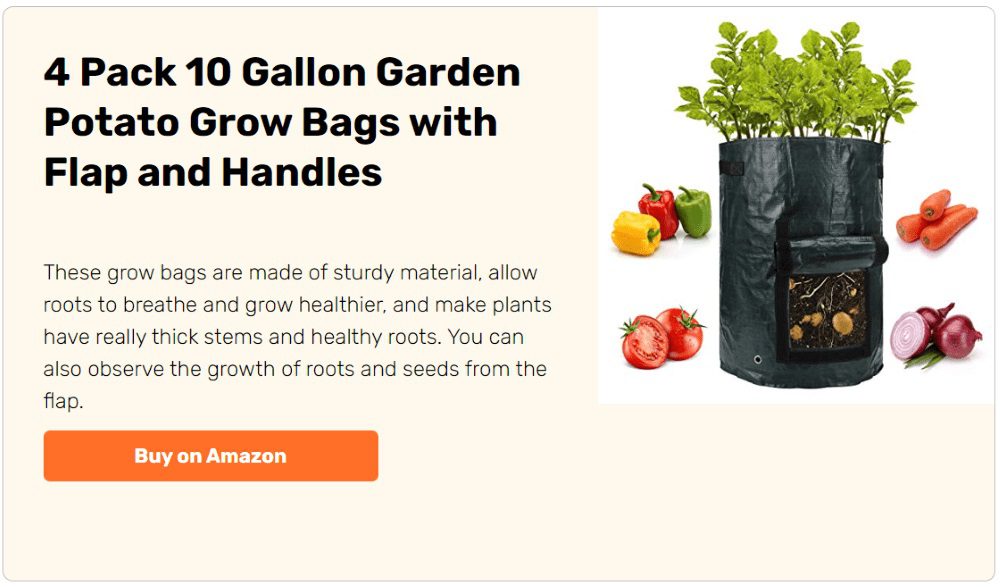
Laundry Basket
Don’t throw out that tired old laundry basket! As you can see, these plastic baskets make perfect potato planters. However, it’s essential to keep in mind that this system’s openness means moisture can evaporate more quickly from the growing medium.
To ensure the optimal growth of your potatoes, be vigilant about maintaining consistent moisture levels. Don’t let the growing medium become excessively dry, as this can impede the development of your potato plants.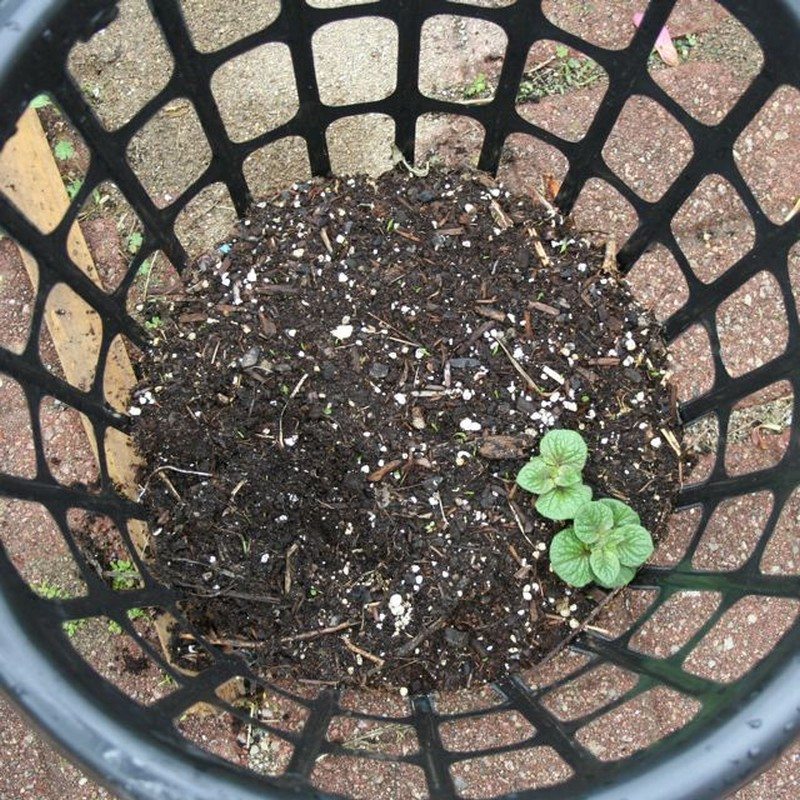
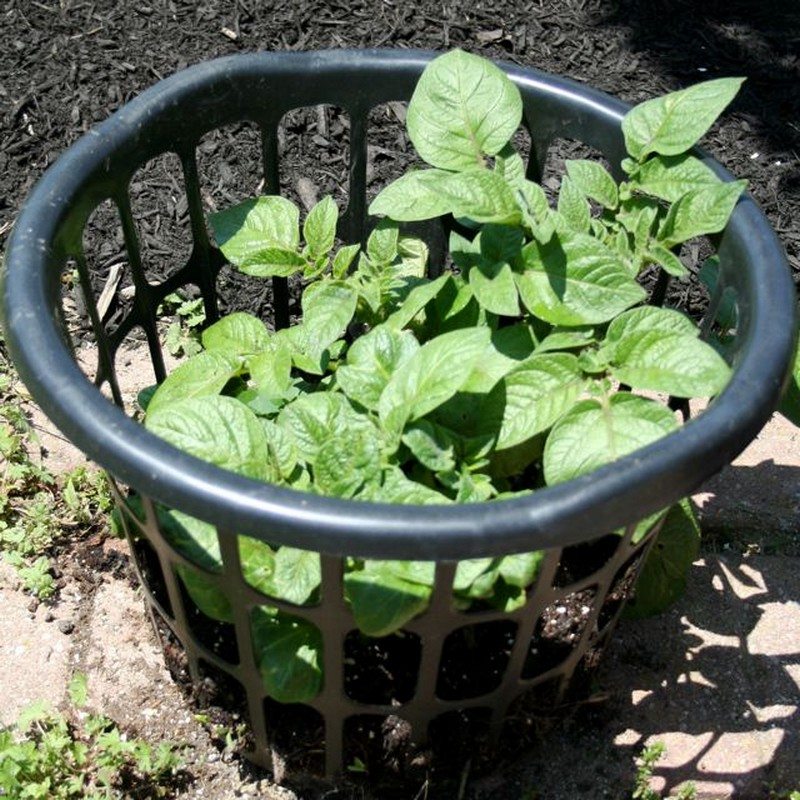
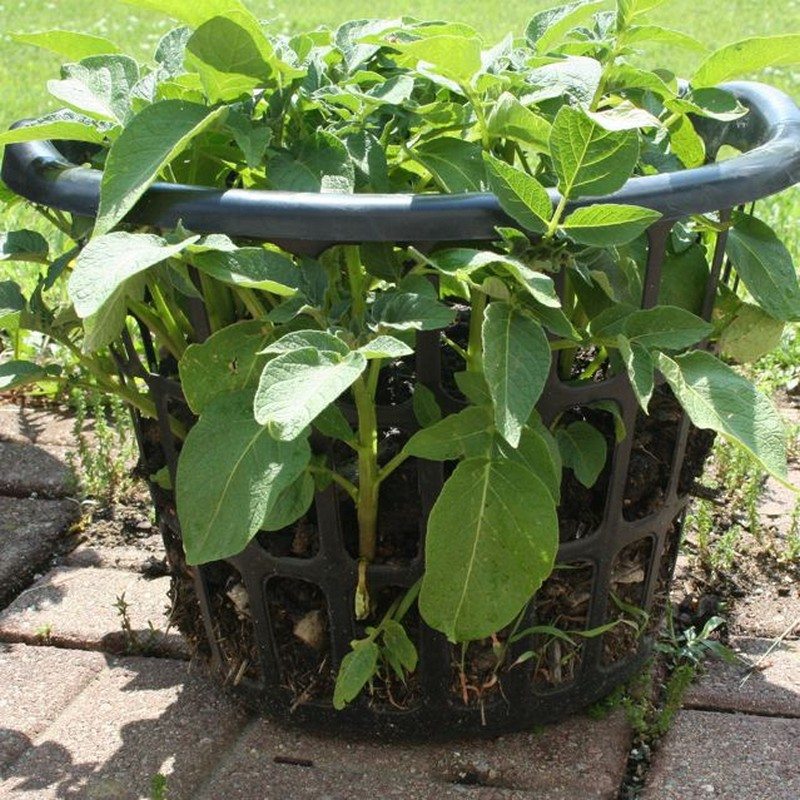
Garbage Bags
If you want something easy to make, you can use biodegradable garbage bags. These are great if you are in a cold zone and want to get an early-season start since the bags readily absorb the sun’s warmth.
As the sun’s rays penetrate the translucent material, they generate a gentle, nurturing warmth that envelops the soil and the emerging seedlings or plants. The localized warming effect can be a game-changer, especially when you’re eager to kickstart your gardening endeavours early in the season. It provides a cozy, protected environment that encourages seeds to germinate and seedlings to thrive, even in cooler temperatures.
The biodegradable nature of these potato planters also aligns with eco-conscious gardening practices. As your plants flourish within the bags, the material gradually breaks down, enriching the soil with organic matter. This sustainable approach not only benefits your garden but also contributes to reducing waste and minimizing your environmental footprint.

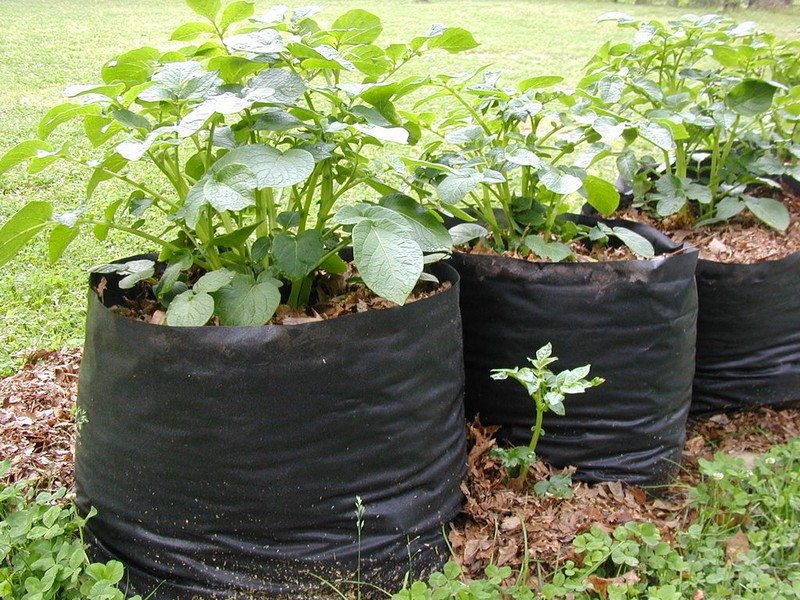
Wire Cage
Do you have any excess chicken wire from a previous project? Perfect! This kind of planter is also one of the easiest to build and harvest. 🙂
The flexible and malleable nature of the wire lends itself to crafting potato planters that adapt to your needs with relative ease. Its construction is refreshingly uncomplicated, and the resulting planters provide a host of advantages that simplify both planting and reaping rewards.
The open structure of the chicken wire permits straightforward access to your plants’ bounty. This design feature even eliminates the need for complicated maneuvers or the risk of damaging the plants during harvest.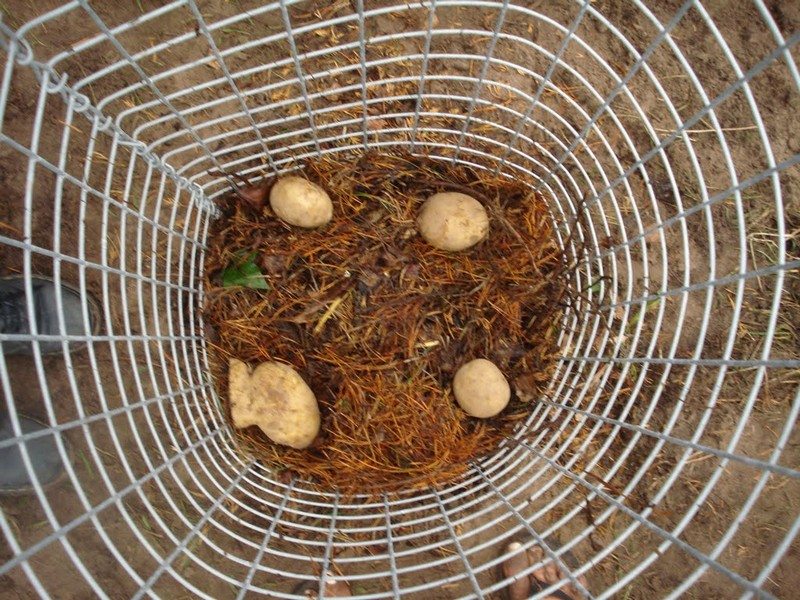
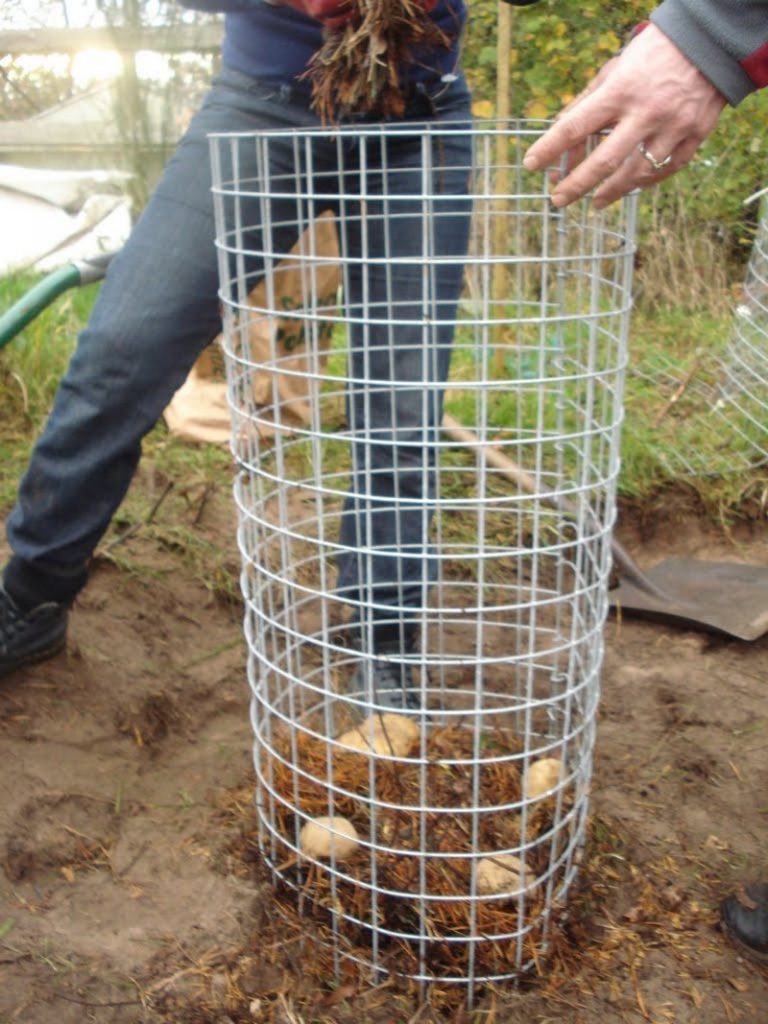
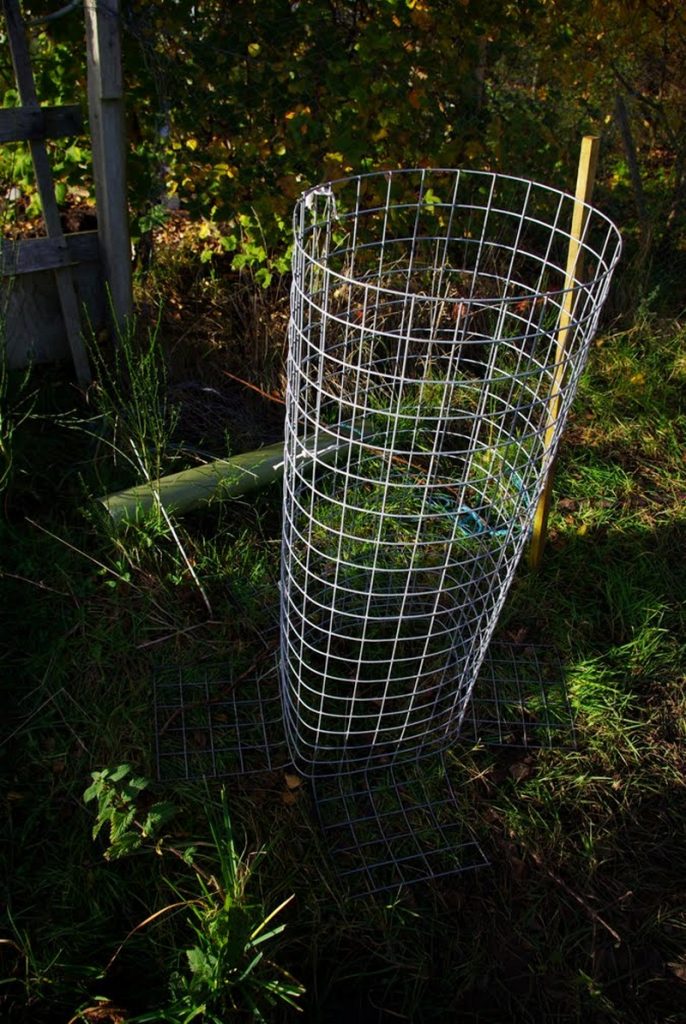
Old Tires
Have your kids outgrown the tire sandbox you made for them? Use it for this purpose! If you have access to a good number of old tires, then you should have no problem with growing all kinds of potatoes!
Note that there is some opposition to using tires as potato planters for there is a possibility of chemicals leaching from the tires to the food. So, it is suggested that you do your research.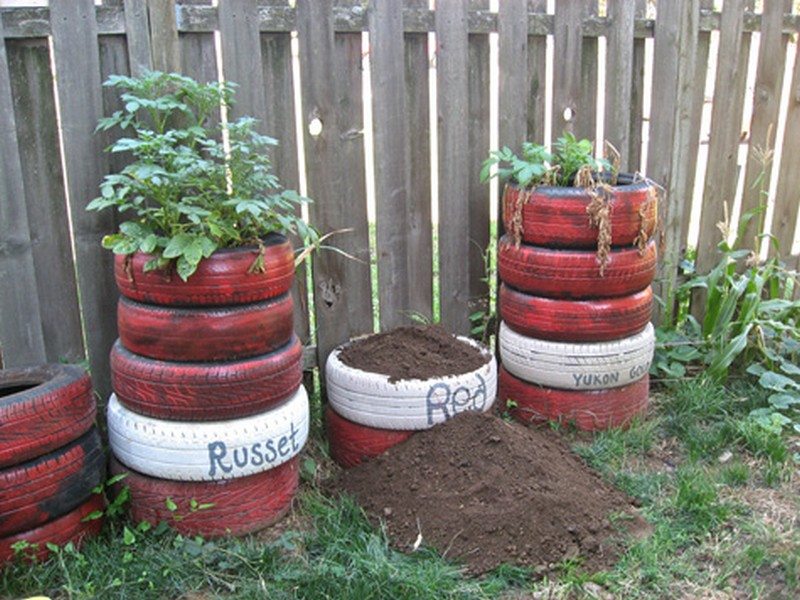
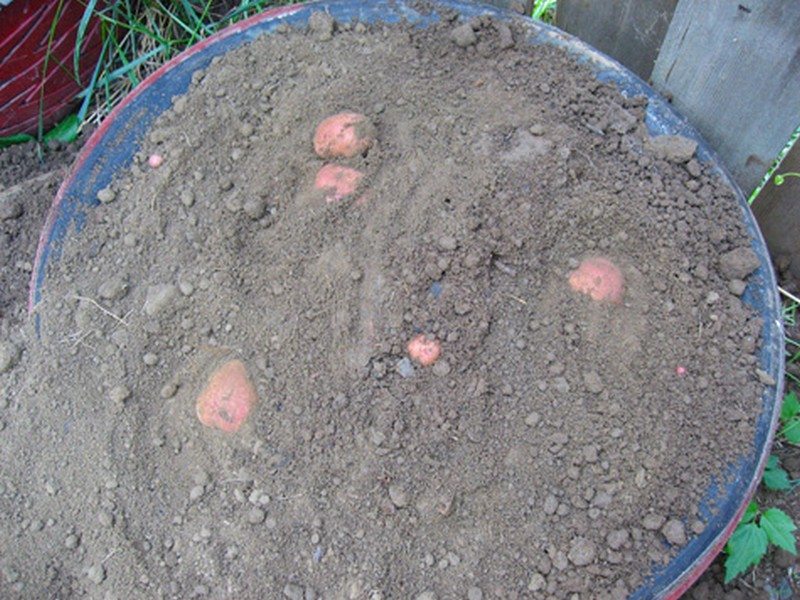
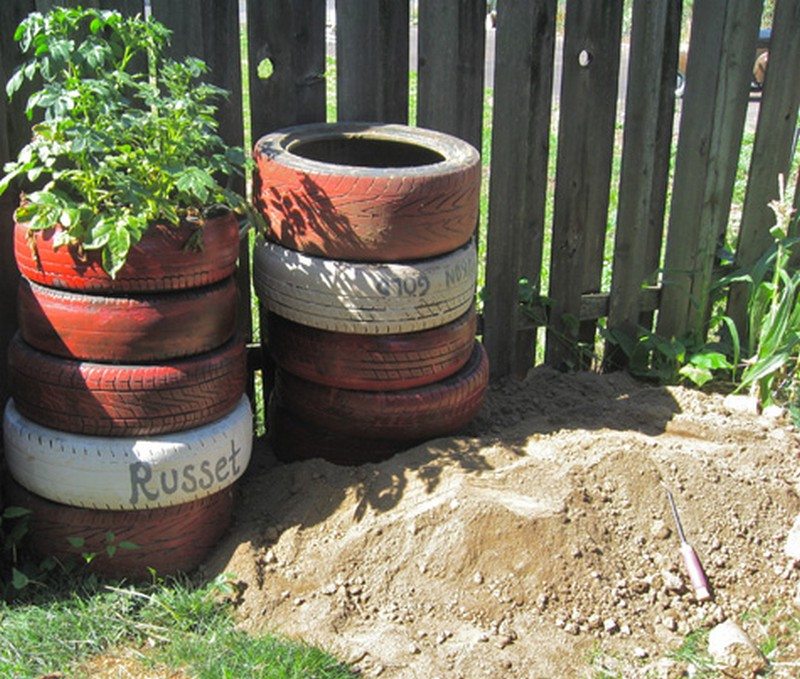
Plastic Barrels
I don’t know about your household but between detergents and bulk foods, we get our share of 20 litres (5 gallons) containers! We keep finding new uses for them. Take a look at these potato planters!
The spaciousness of these containers provides ample room for your potato plants to flourish, encouraging healthy growth and ultimately yielding a satisfying harvest too!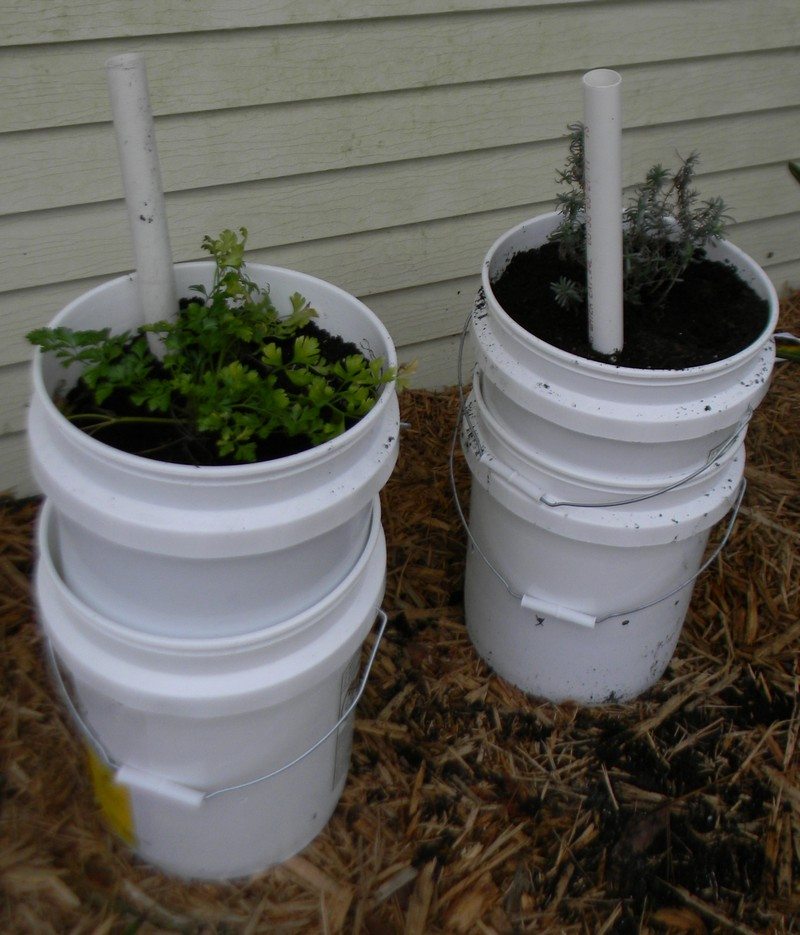
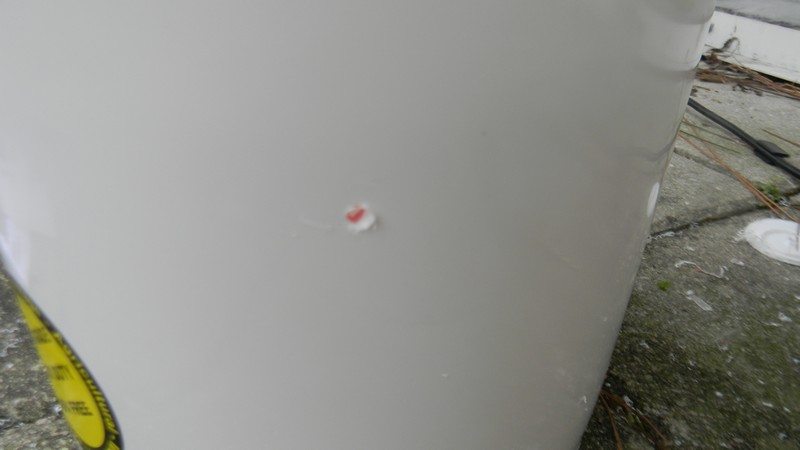

Build-As-You-Grow
The name speaks for itself. Just keep adding one level of wood boards as your potatoes grow. Simple!
The “add-a-board” method simplifies the essential practice of hilling, which involves mounding soil around the base of the potato plant to protect the developing tubers from sunlight. With each new board, you add, you effectively “hill up” your potatoes, ensuring they remain well-covered and shielded from the sun’s rays.
By adding boards at regular intervals, you maintain a uniform level of soil coverage around the potato plants. This consistency helps prevent sun exposure, which can cause potatoes to turn green and develop toxins. By keeping the tubers well-covered, you promote healthy growth and minimize the risk of sun damage.
The “add-a-board” method is highly adaptable to different container sizes and growing environments. Whether you’re using a raised bed, a container, or an improvised planter, you can adjust the height and width of the structure to accommodate the growth of your potato plants and ensure sufficient soil coverage.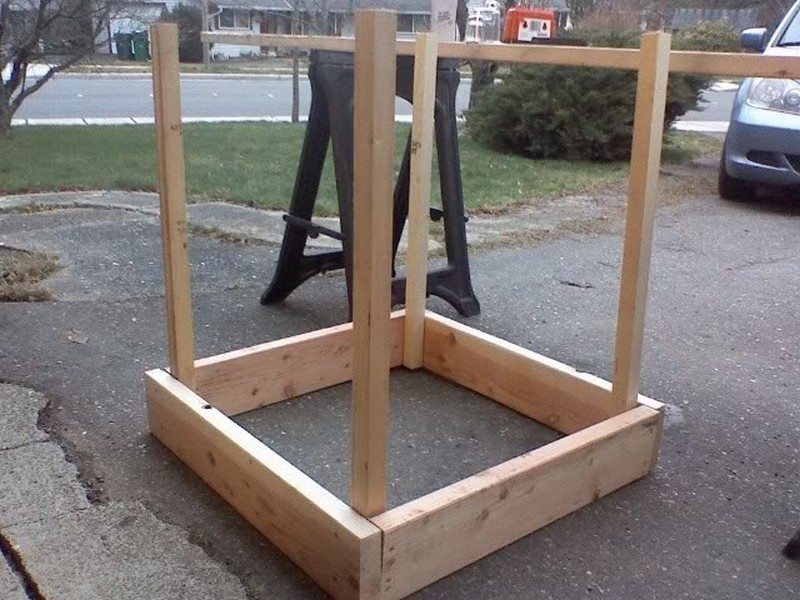
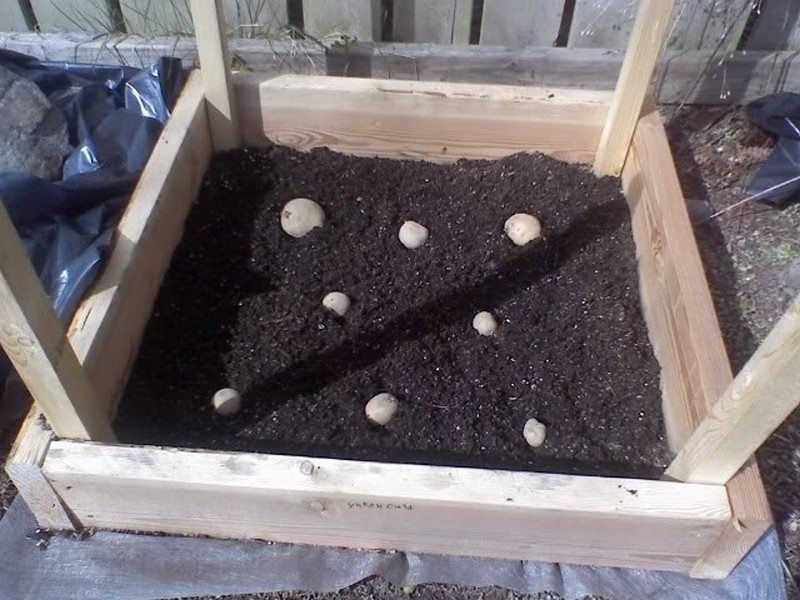
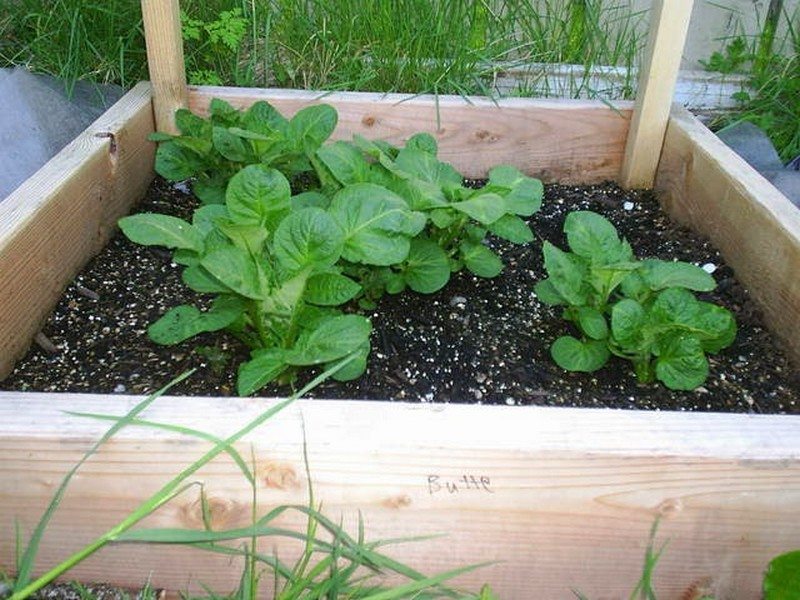
Wine Barrels
Want a beautiful planter for your beautiful garden? You can never go wrong with this rustic wine barrel planter! Mind you, given the cost of the barrels, you’d need to be planting gourmet potatoes!
By embracing this rustic wine barrel planter and selecting premium potatoes, you’re weaving a tapestry of flavour and aesthetics. It’s a reminder that gardening is a canvas for creativity, where each element harmonizes to make a work of art of both delectable taste and visual delight.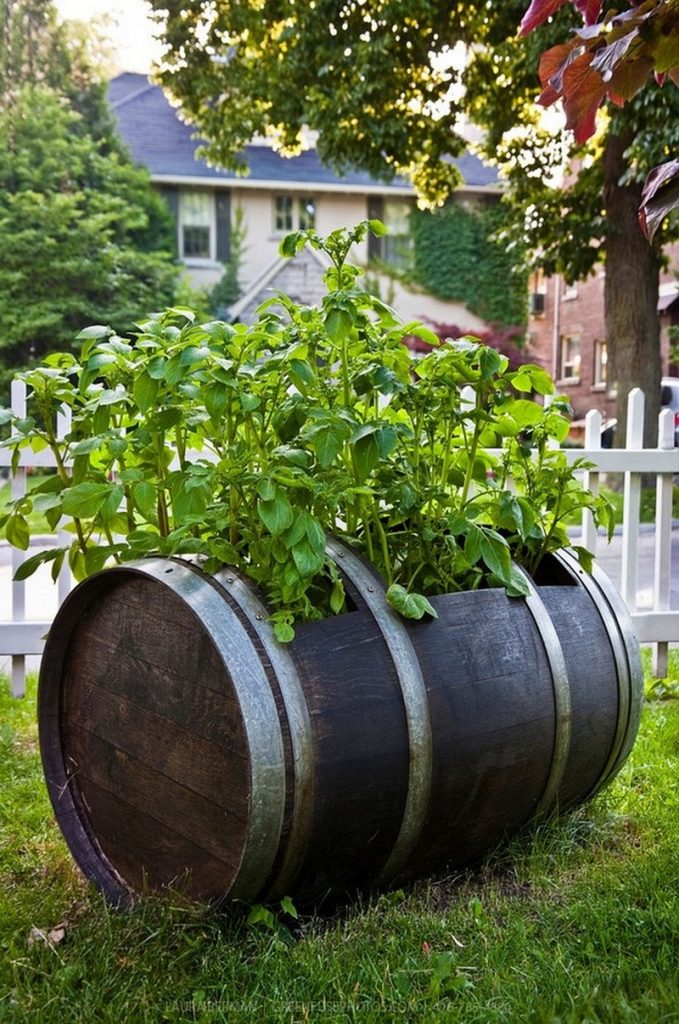
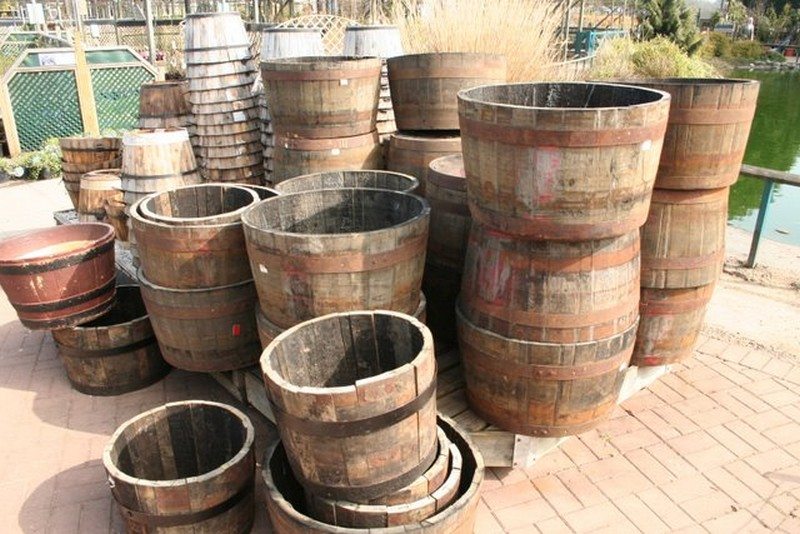
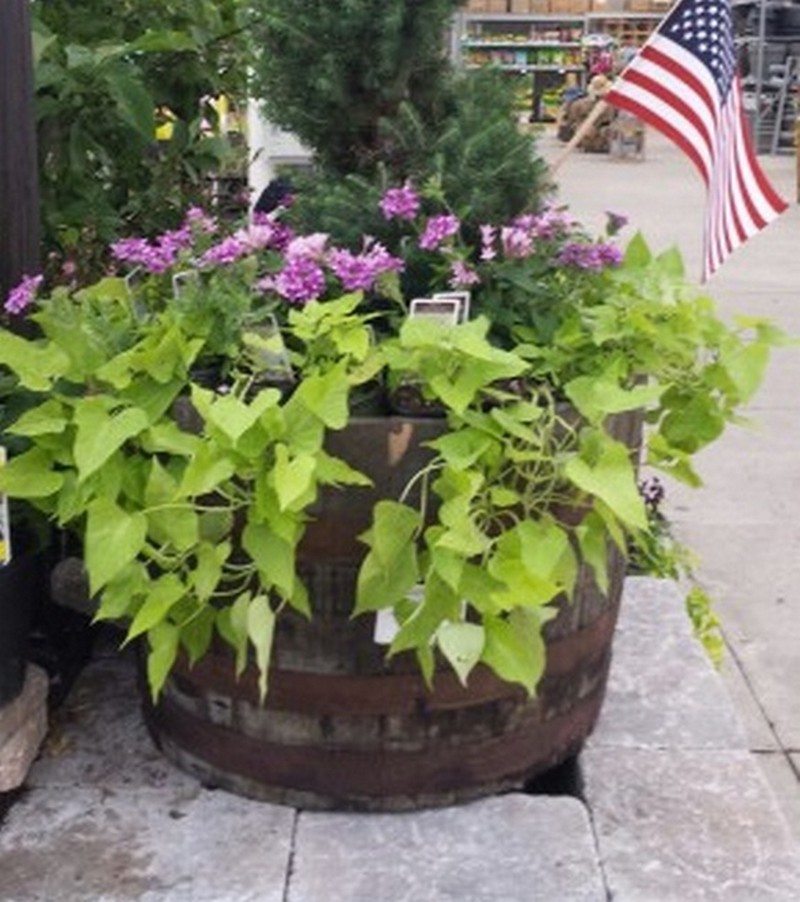
Pallets
Ah yes… the humble pallet. Pallets can be almost anything you want, including a potato planter!
Pallets are inherently modular, with separate sections that can be filled with soil to accommodate your growing potatoes. Their sturdy structure provides excellent support for the weight of the soil and the developing potato plants.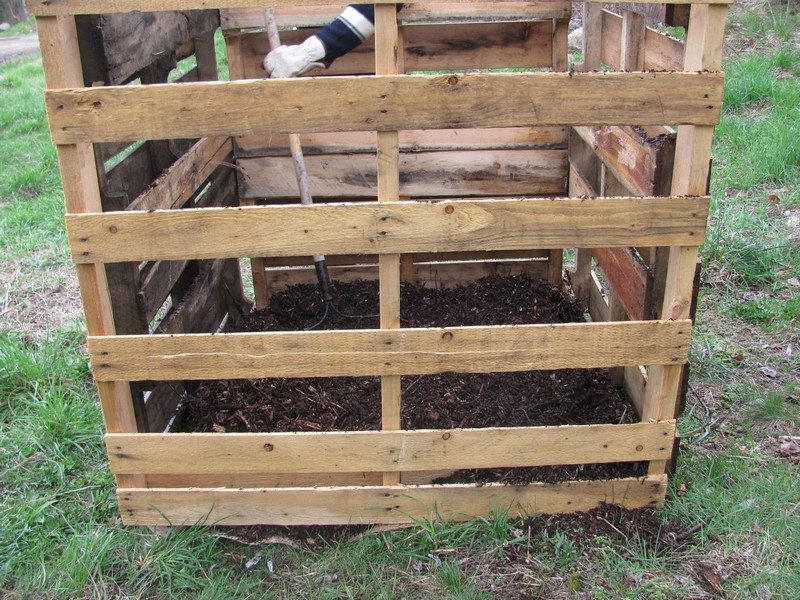
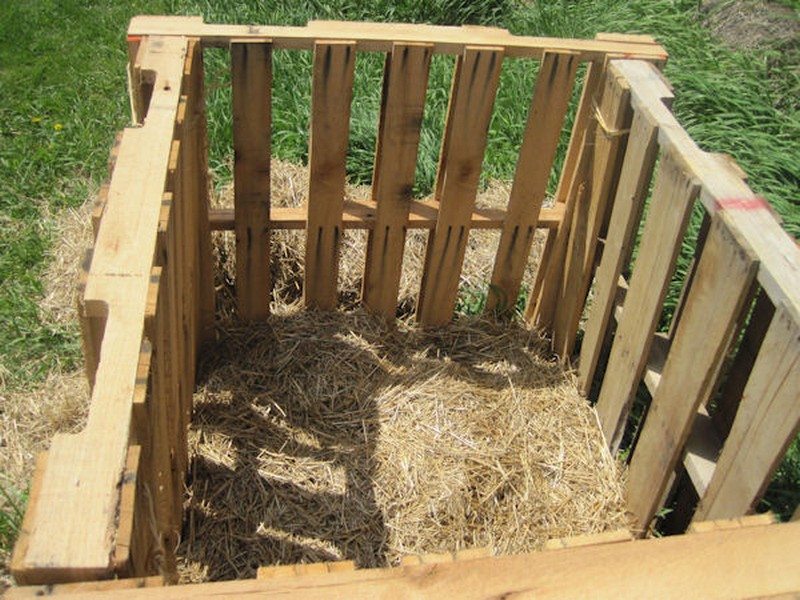

Potato Tubs
And the half? Well, if you are restricted to space, here’s a great option for growing spuds in a tiny footprint. They’re called ‘potato tubs‘, cost around $7.50 each and they’re good for a few seasons. That means you can even grow your crop on an apartment balcony!
The bottom line is that growing your spuds is an easy and fun project! Which idea are you going for? If you have ample outdoor space and enjoy the hands-on experience of traditional gardening, planting your potatoes in a garden bed is a classic option. You can prepare the soil, plant your potatoes, and hill them up as they grow, enjoying the process of tending to your plants from start to finish.
Grow your spuds with this Potato Patio Planter…
Grow your root vegetables at home with these Root Vegetable Grow Bags!
Safety Precautions
Safety precautions for DIY potato planters, especially those utilizing “no-dig” methods, are essential to ensure a safe gardening experience.
- Use Safe Materials: When selecting materials for your DIY potato planters, choose non-toxic options that will not leach harmful chemicals into the soil. Avoid treated wood or containers made from materials that may contain harmful substances.
- Wear Protective Gear: When handling materials such as soil, compost, or mulch, wear appropriate protective gear such as gloves and a mask to prevent skin irritation and inhalation of dust particles.
- Be Mindful of Weight: Consider the weight of the materials used in your potato planters, especially if it will be placed on a balcony or elevated surface. Ensure that the structure is stable and can support the weight of the soil and plants without risk of collapse.
- Avoid Tripping Hazards: Keep your gardening area organized and free of clutter to minimize the risk of trips and falls. Store tools and equipment properly when not in use, and avoid leaving hoses or other obstacles in walkways.
- Follow Instructions: If you are using any tools or equipment to construct your DIY potato planters, be sure to read and follow the manufacturer’s instructions carefully to prevent accidents or injuries.
- Watch for Sharp Edges: Be cautious of any sharp edges or protrusions on your potato planter materials that could cause cuts or injuries. Sand down rough edges or use protective coverings as needed.
- Keep Children and Pets Safe: If you have children or pets, ensure that your potato planters are placed in a location where they cannot access them unsupervised. Be aware of any potential choking hazards, such as small pieces of material or tools.
- Stay Hydrated: Gardening can be physically demanding, especially in hot weather. Remember to drink plenty of water and take breaks as needed to avoid dehydration and overheating.
- Protect Against Sun Exposure: If you will be spending extended periods working in the garden, protect yourself from sunburn by wearing sunscreen, a hat, and lightweight, breathable clothing.
- Handle Chemicals Safely: If you are using any fertilizers, pesticides, or other chemicals in your potato planters, be sure to handle them safely and according to the manufacturer’s instructions. Store chemicals in a secure location away from children and pets.
By following these safety precautions, you can enjoy the process of growing potatoes in your DIY potato planters while minimizing the risk of accidents or injuries.
Homegrown Spuds Made Easy!
Unlock the magic of effortless potato cultivation with this guide. These ingenious, no-dig methods are a game-changer for every gardener, from beginners to seasoned pros.
Whether you choose to repurpose common household items, build bespoke potato planters, or embrace innovative no-dig techniques, your potato-growing journey is about to become simpler, more eco-friendly, and incredibly rewarding with the use of unique potato planters.
Discover the joy of nurturing your delicious potatoes. These ten methods make it easier than ever to enjoy homegrown spuds fresh from your garden.
Happy planting!
If you liked these DIY potato planters, you might also like these gardening ideas.
Frequently Asked Questions
1. What materials can I use to make DIY potato planters?
You can use various materials such as wooden crates, plastic containers, fabric grow bags, old tires, barrels, or even straw bales.
2. How much space do you need for a DIY potato planter?
The space required depends on the size of the container and the number of potatoes you want to grow. Generally, aim for at least 2 square feet of space per potato plant.
3. Do I need to dig when planting potatoes in a DIY planter?
No, one of the advantages of DIY potato planters is the “no-dig” approach. Potatoes can be planted directly on top of the soil or added in layers as they grow, eliminating the need for digging.
4. How often should you water your DIY potato planter?
Potatoes require consistent moisture, so water the planter whenever the top inch of soil feels dry. Ensure the soil is evenly moist but not waterlogged.
5. Can you grow potatoes in a DIY planter indoors?
Yes, you can grow potatoes indoors in a location with sufficient sunlight or under grow lights. Ensure proper ventilation to prevent mould or fungal issues.
This is especially important in indoor settings where air circulation may be limited compared to outdoor environments. Simple measures such as opening windows, using fans, or installing ventilation systems can go a long way in creating a healthy growing environment for your indoor potato crop.
6. When can you harvest potatoes from your DIY potato planters?
Potatoes are typically ready for harvest about 10 to 12 weeks after planting. Be vigilant until the plants start to yellow and die back before harvesting for best results.
7. How do you prevent pests and diseases in your DIY potato planters?
Stay vigilant and regularly inspect your potato plants for any signs of pest activity or disease symptoms. Early detection is key to preventing issues from escalating and causing widespread damage.
Consider selecting potato varieties that are known for their resistance to common pests and diseases. This can help minimize the likelihood of problems occurring in the first place. Practice crop rotation by avoiding planting potatoes in the same location year after year. Rotating crops helps disrupt pest and disease cycles, reducing their impact on your potato plants.
Practice good garden hygiene in your potato planters by removing any decaying plant matter promptly. Monitor plants for signs of pests or diseases and consider using organic pest control methods if needed.
8. Can I reuse the soil in my DIY potato planters for future plantings?
Yes, you can reuse the soil, but it’s essential to replenish nutrients by adding compost or organic matter before planting again. Rotate crops to prevent soil depletion and disease buildup.






